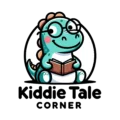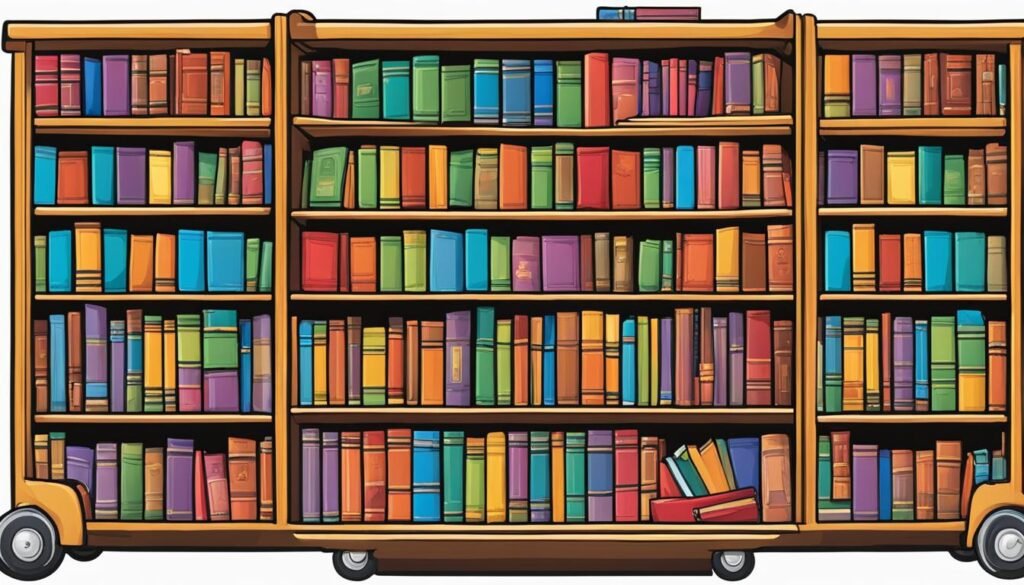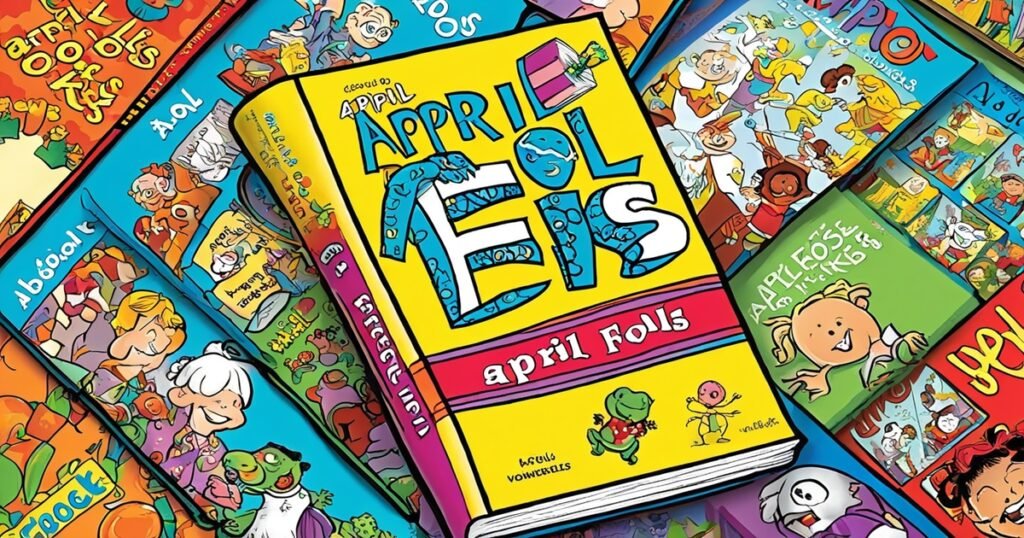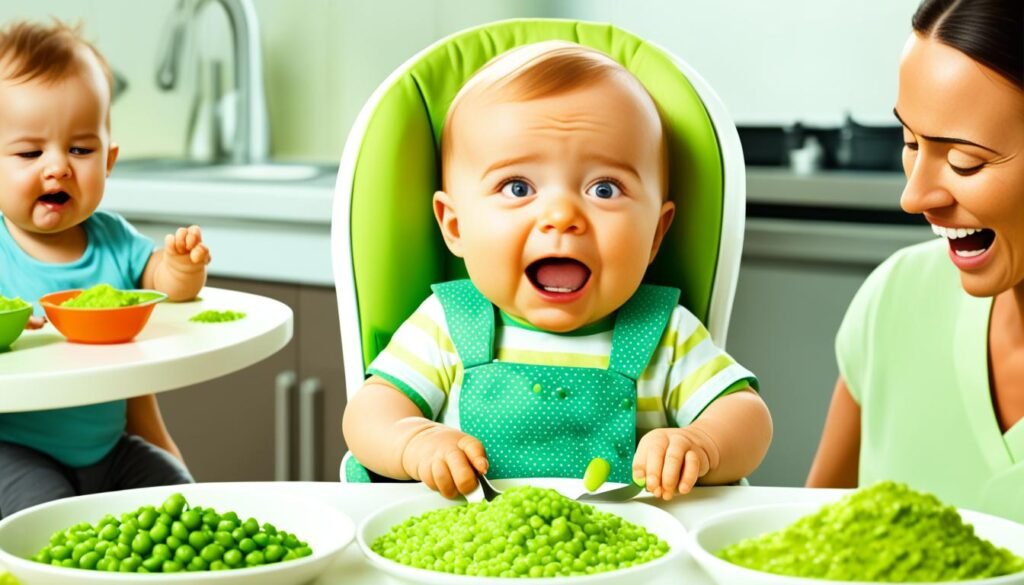As the first steps on the lifelong journey of education begin, selecting the top 100 books to read in kindergarten is an essential task for parents and educators alike. These recommended books for kindergarten not only cultivate a love for reading but also contribute to a child’s cognitive development and cultural literacy. The reading list for kindergarten, often referred to as the Kindergarten Canon, is a curated collection that has been thoughtfully assembled with favorites like “Where The Wild Things Are” by Maurice Sendak and “The Snowy Day” by Ezra Jack Keats sitting alongside timeless classics and contemporary gems. These books serve as a touchstone for childhood development, offering stories that are instrumental in shaping young minds.
Immersive and diverse, these treasured tales foster emotional connections and open doors to new worlds, making them indispensable on a kindergartener’s bookshelf. They are more than just stories; they are the seeds from which a lifelong passion for reading can grow. That’s why choosing the right literature for this foundational stage is crucial in setting the stage for future academic success and a deep-seated appreciation for storytelling.
Table of Contents
- Key Takeaways
- The Magic of Storytime: Why Read to Kindergarteners
- 100 Books to Read in Kindergarten
- Nurturing Empathy and Understanding Through Books
- Classics vs. Contemporary: Balancing Your Kindergartner’s Reading List
- Illustrations Matter: Visual Literacy in Kindergarten Books
- Encouraging a Lifelong Love for Reading
- Books for Beginning Readers: Launching Literacy Foundations
- Read-Aloud Favorites: Foster Interaction and Engagement
- 100 Books to Read in Kindergarten: From Imagination to Education
- Conclusion
- Source Links
Key Takeaways
- Handpicked selection of books creates a solid foundation for cultural literacy.
- Stories like “Alexander and the Terrible, Horrible, No Good, Very Bad Day” support emotional growth.
- Classics and new titles together offer a balanced reading experience for young learners.
- Children’s development is enriched through the shared experience of reading.
- Books selected have the potential to become a cherished part of a child’s personal history.
- Kindergarten Canon serves as a critical resource for parents and educators.
The Magic of Storytime: Why Read to Kindergarteners
Delving into the pages of must-read books for kindergarteners, we unveil the mesmerizing world of storytelling that extends beyond mere entertainment. Storytime for children around the age of five is more than a quiet moment; it’s an educational scaffold that constructs the language skills, emotional understanding, and cognitive growth necessary for their journey ahead.
Building a Bond Through Reading
As parents and educators embark on the enriching task of discovering books for 5-year-olds, they also nurture a deeper emotional connection with them. Stories such as Margaret Wise Brown’s “Goodnight Moon” offer a shared experience that is cherished, carving lasting memories of togetherness and comfort during these early, impressionable years.
Developing Language and Listening Skills
The articulation of words and melodies of sentences found in books for beginning readers such as Eric Carle’s “The Very Hungry Caterpillar” stimulate the young minds of kindergarteners. The diverse vocabulary, engaging narratives, and rhythmic patterns present in these tales serve as tools for enhancing their language and listening skills.
The Importance of a Diverse Bookshelf
Cultivating an inclusive library replete with books like Ibram X. Kendi’s “Antiracist Baby” and Khan’s “Under My Hijab” is a proactive approach to introducing kindergarteners to a variety of cultures and lifestyles. A diverse bookshelf embodies a world of empathy and broader perspectives, laying an early foundation for understanding and acceptance.
100 Books to Read in Kindergarten
Embarking on the enriching journey of early literacy, we present a diverse selection of kindergarten books that are essential to every young reader’s library. These kindergarten book suggestions have been meticulously chosen to engage, educate, and inspire children as they begin their reading adventure.
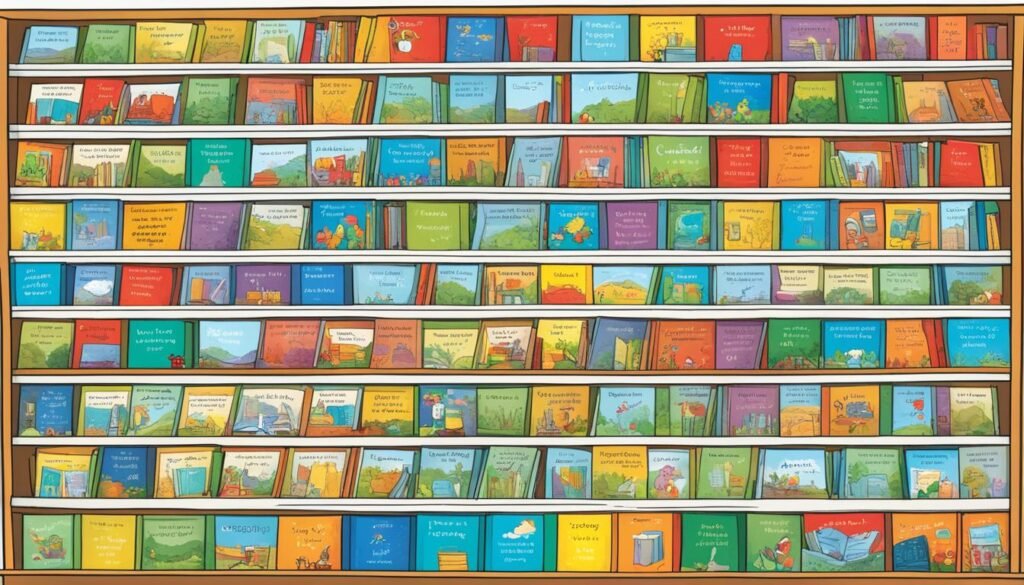
Each book on this list serves as a stepping stone into the vast world of literature, contributing not only to the joy of reading but also to the significant cognitive and emotional development at this critical growth stage. Recognizable titles like “I Love You, Sun I Love You Moon” by Karen Pandell, “Blue Hat, Green Hat” by Sandra Boynton, and “Chicka Chicka Boom Boom” by Bill Martin Jr. provide captivating experiences that will ignite a child’s imagination and curiosity.
What follows is a table that offers a snapshot into the diverse range of books that hold the potential to become lifelong favorites. Each work listed contributes uniquely to the foundational years of a child’s exploration of language, emotions, and the world around them:
| Title | Author | Genre | Skills Developed |
|---|---|---|---|
| I Love You, Sun I Love You Moon | Karen Pandell | Picture Book | Emotional Bonding, Nature Appreciation |
| Blue Hat, Green Hat | Sandra Boynton | Board Book | Color Recognition, Humor |
| Chicka Chicka Boom Boom | Bill Martin Jr. | Picture Book | Alphabet Awareness, Rhythm |
| The Very Hungry Caterpillar | Eric Carle | Picture Book | Natural World, Counting |
| Goodnight Moon | Margaret Wise Brown | Picture Book | Bedtime Routine, Calming Down |
- Interactive board books are paramount for hands-on learning and sensory exploration.
- Vibrantly narrated picture books lay the groundwork for language acquisition and storytelling.
- Books focusing on character development and emotional intelligence foster a child’s ability to empathize and connect.
- Songs and rhymes in certain selections encourage phonemic awareness and a love for the musicality of language.
The treasures listed in this kindergarten book suggestions guide are but a sampling of the literary gifts that await eager young minds. It is these stories that spark the flames of wonder, empathy, and intellect, proving that the magic of kindergarten books can indeed shape the course of a child’s life.
Nurturing Empathy and Understanding Through Books
At a time when foundational values are being cemented, books for beginning readers play a crucial role in developing empathy and understanding in kindergarteners. In the world of early education, popular books for kindergarten serve as both mirrors and windows, reflecting children’s own experiences and giving them a glimpse into the lives of others.
Stories of Friendship and Acceptance
Among the books that best encapsulate these concepts are tales that highlight the virtues of compassion, kinship, and inclusiveness. Classics like “Frog and Toad are Friends” by Arnold Lobel, offer young readers relatable narratives that emphasize the value of true friendship, teaching them the beautiful nuances of camaraderie. Another gem is “The Rainbow Fish” by Marcus Pfister, which weaves a vibrant story about the joy of sharing and the strength of a community that values each of its members equally.
Exploring Emotions with Picture Books
Picture books, with their rich illustrations and emotive storytelling, are excellent catalysts for helping children articulate and comprehend an array of emotions. These narrative journeys introduce them to the complexities of feelings, guiding them to recognize and respect emotional expressions in themselves and others. Books such as “The Feelings Book” by Todd Parr, empower children with the vocabulary and understanding needed to navigate through their emotions effectively, thereby laying a strong foundation for emotional literacy.
Classics vs. Contemporary: Balancing Your Kindergartner’s Reading List
When building a kindergartner’s literary foundation, the value of a balanced reading list cannot be overstated. It is here that the timeless narratives and modern tales converge, offering a spectrum of experiences to young readers. Classics provide an invaluable connection to our past, while contemporary stories reflect the varied tapestry of today’s society.
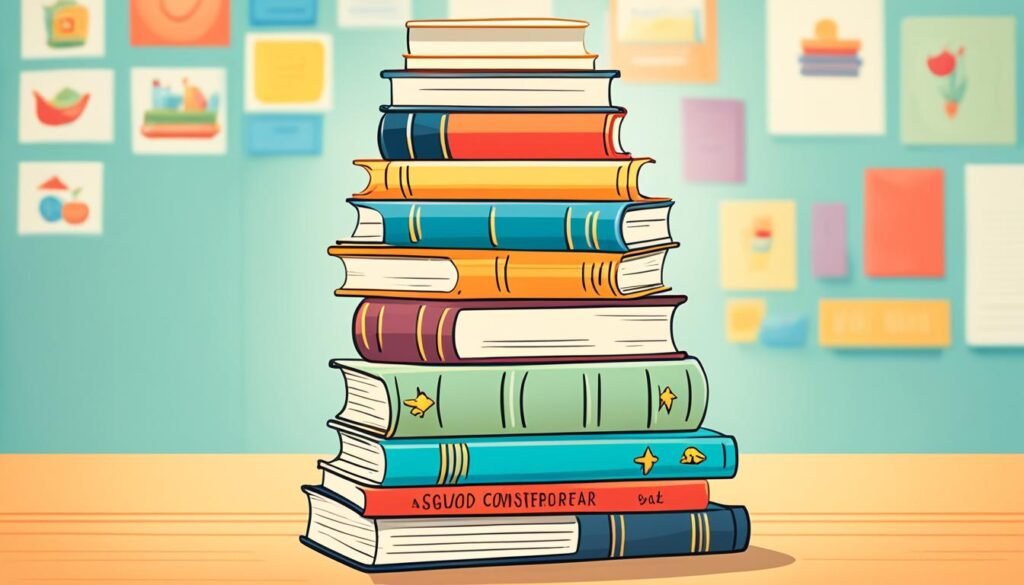
Understanding this blend is crucial for catering to a child’s growing curiosity about the world and its many stories. The goal is to instill a love for reading by presenting the best books for kindergarten that resonate with current times while also preserving the invaluable lessons from stories of yore.
Introducing Timeless Tales
Among the must-read books for kindergarteners are the classics—stories that have withstood the test of time. These narratives, like the enchanting “Cinderella” or Ludwig Bemelmans’s “Madeline,” extend a bridge to bygone eras. They contain enduring lessons on morality, bravery, and kindness that are as pertinent today as when they were first penned.
Teachers and parents alike continue to reach for these classics to provide children with a sense of continuity and tradition. These stories enrich a young reader’s understanding of cultural heritage and introduce themes that recur throughout literature and life.
Discovering Modern Classics
Contrasting with the old, modern classics introduce a spirit of diversity and contemporaneity. Books like Jessica Love’s “Julián Is A Mermaid” deliver fresh perspectives on identity and acceptance, vital discussions in today’s evolving cultural landscape. These stories are doorways to a broader worldview, full of vibrant characters and unique situations.
Emphasizing tales that mirror our present world, these modern stories grant kindergarteners the opportunity to see themselves and the world they know reflected in their reading. This fosters empathy, inclusivity, and the acknowledgement that literature is a living entity, continuously expanding to encompass the diversity of human experience.
The ultimate kindergarten book selection is harmoniously blended, ensuring children are introduced to a breadth of experiences and storytelling traditions. To enable parents and educators to forge this crucial balance in their children’s lives, here is a compiled table of classics and contemporary books that are pivotal for kindergarten readers:
| Title | Author | Classification | Themes/Values |
|---|---|---|---|
| Cinderella | Brothers Grimm | Classic Tale | Morality, Resilience |
| Madeline | Ludwig Bemelmans | Classic Tale | Bravery, Adventure |
| Julián Is A Mermaid | Jessica Love | Modern Classic | Identity, Acceptance |
| The Very Hungry Caterpillar | Eric Carle | Contemporary | Growth, Change |
With such a cultivated list, children can navigate through early education with a robust literary toolkit—equipped for empathy, moral insight, and an appreciation for the world’s narratives, classic and new. A carefully crafted library of the best books for kindergarten is indeed a treasure trove of learning and delight for every young reader.
Illustrations Matter: Visual Literacy in Kindergarten Books
When it comes to popular books for kindergarten, illustrations are not merely decorations; they are a powerful teaching tool that enhances visual literacy among young readers. Vibrant artwork in books for 5-year-olds invites a deeper level of engagement, encouraging children to explore the narrative beyond the written word.
In stories like “The Snowy Day” by Ezra Jack Keats, children encounter a wintry landscape filled with crisp, white snow against the backdrop of an urban environment, sparking their visual curiosity. Similarly, “Tar Beach” by Faith Ringgold uses color and pattern to transport readers into a dreamy rooftop tale of freedom and flight over Harlem’s night sky.
But it is not just about aesthetics. The illustrations in these cherished kindergarten books serve a dual purpose: they not only captivate but also help young readers develop an understanding of the story’s context and emotions. This is particularly evident in “The Undefeated” by Kwame Alexander and Kadir Nelson, where the potent images carry as much of the narrative as the evocative prose.
Children’s ability to interpret visual cues is a critical skill that aids comprehension and narrative recall. As they analyze the images, they reinforce their understanding of the story, making the reading experience more enriching and meaningful.
The synergy between text and illustrations in kindergarten books is especially crucial for those just beginning their educational journeys. Recognizing this, educators and parents should deliberate on selecting books rich in visual storytelling as part of their approach to cultivating a rounded learning experience.
To better understand the impact of illustrations on young readers, consider the visual experiences provided by various popular books for kindergarten:
| Book Title | Author | Illustrator | Visual Elements |
|---|---|---|---|
| The Snowy Day | Ezra Jack Keats | Ezra Jack Keats | Vivid landscapes, urban setting |
| Tar Beach | Faith Ringgold | Faith Ringgold | Bold colors, quilt-like patterns |
| The Undefeated | Kwame Alexander | Kadir Nelson | Dynamic portraits, emotional depth |
By carefully choosing illustrated books that reflect these details, adults can support the development of visual literacy while fostering a love for reading. As documents of imagination, these books become an indispensable resource, contributing to the growth and learning of kindergarten students across the nation.
Encouraging a Lifelong Love for Reading
Fostering an enduring passion for books starts with sparking the curiosity of young minds. The right reading list for kindergarten is crucial, packed with stories that capture imagination and reflect the manifold experiences of life. It’s about developing a taste for the joyous act of reading, which, once established, continues to grow throughout life.
Choosing Books That Kindle Curiosity
Books like “Go, Dog. Go!” by P.D. Eastman ignite the innate wonder in children, making them excellent components of a kindergarten book suggestions list. With lively characters and adventurous scenarios, such books fuel the eagerness to explore further, building stepping stones to more complex reading.
Catering to Varied Interests with a Diverse Reading List
A wide array of genres and stories is essential to cater to each child’s unique interests. Including books such as “The Story of Ferdinand” by Munro Leaf and “Last Stop on Market Street” by Matt de la Peña ensures that children find characters and narratives they relate to, making the experience of reading inclusive and representative of the diversity in their world.
Here’s a snapshot of some books that cater to varied interests and promote an enduring reading habit:
| Title | Author | Genre | Appeal |
|---|---|---|---|
| Go, Dog. Go! | P.D. Eastman | Children’s book | Adventure, Humor |
| The Story of Ferdinand | Munro Leaf | Picture Book | Empathy, Peace |
| Last Stop on Market Street | Matt de la Peña | Children’s Literature | Urban Life, Diversity |
Building a reading list for kindergarten that includes a wide spectrum of topics and themes is vital to ensure that as children’s interests expand, their appetite for reading grows with them. An inclusive library becomes a garden where curiosity blossoms into a lifelong love for reading.
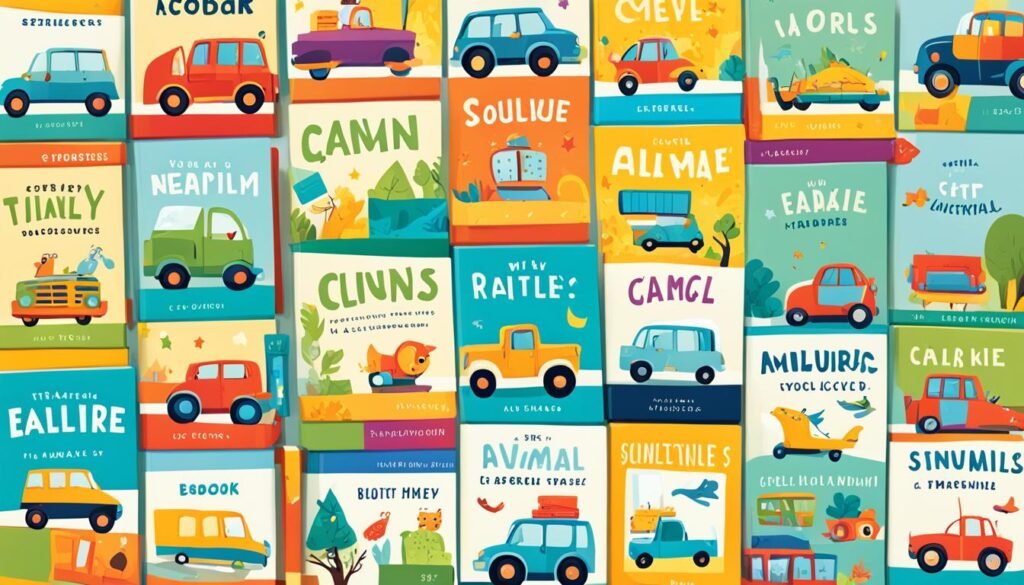
Books for Beginning Readers: Launching Literacy Foundations
Embarking on the journey of literacy begins with carefully selected books for beginning readers. The vibrant and rhythmic tales found within the pages of “Brown Bear, Brown Bear, What Do You See?” by Bill Martin, Jr. & Eric Carle, for example, are designed to captivate the attention of kindergarten students and serve as delightful stepping-stones towards reading proficiency.
Similarly, “The Cat in the Hat” by Dr. Seuss introduces kindergarteners to the joys of storytelling through its engaging narrative and memorable characters. These kindergarten books are carefully crafted with repetitive phrases, and rhyming patterns that not only entertain but also enhance key literacy skills such as phonemic awareness and word recognition.
Let’s delve deeper into some of the hallmark characteristics of these foundational texts:
- Utilization of repetitive text structure for reinforced learning.
- Inclusion of rhyming words to develop phonological awareness.
- Strategic use of bold and colorful illustrations to support text comprehension.
- Engaging plots that encourage participation and predictability.
These elements are instrumental in developing the skills necessary for young readers to transition from being listeners to active participants in the reading process.
| Book Title | Author(s) | Key Literacy Skill | Interactive Element |
|---|---|---|---|
| Brown Bear, Brown Bear, What Do You See? | Bill Martin, Jr. & Eric Carle | Phonemic Awareness | Pattern Prediction |
| The Cat in the Hat | Dr. Seuss | Word Recognition | Rhyming Fun |
The integration of these kindergarten books into a young learner’s reading list sets the foundation for a future where understanding and enjoyment of literature can flourish. By opening the door to literacy through these beloved and effective educational tools, we lay the groundwork for a lifetime of reading and discovery.
Read-Aloud Favorites: Foster Interaction and Engagement
Stories come to life when shared through the power of a parent’s or teacher’s voice, and this is especially true with best books for kindergarten. These read-aloud favorites are designed to captivate the hearts and minds of young children, especially those around the age of five. Engaging books for 5-year-olds such as “Lilly’s Purple Plastic Purse” by Kevin Henkes and “If You Give A Mouse A Cookie” by Laura Numeroff stand out as essential reads that inspire joy, whimsy, and valuable life lessons.
Interaction and engagement are the pillars of shared reading sessions that introduce children to the delights of narrative. It’s within the folds of these moments that literature becomes a shared bond, a space for adventure, and a tool for social-emotional development.
- Active Participation: Encouraging children to guess what comes next, relate to the characters, and express their feelings about the story helps sharpen their critical thinking skills.
- Creative Story Expansion: Inviting children to imagine alternate endings or different scenarios based on the storyline fosters creativity and storytelling abilities.
- Vocabulary Enhancement: Challenging young listeners with new words and phrases found in the narratives stretches their language skills in fun and memorable ways.
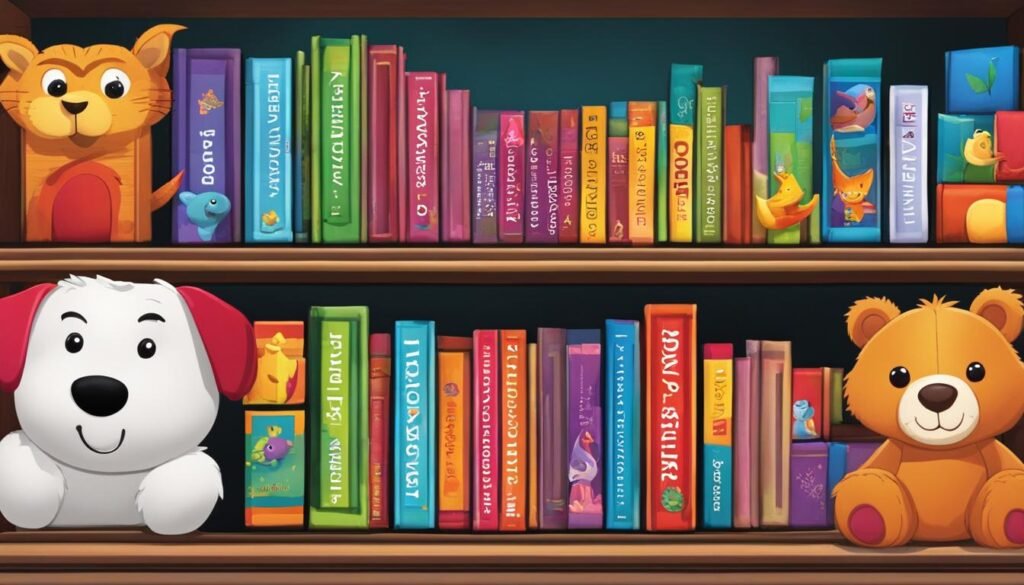
The selection of books that encourages discussion and participation is essential when building a library of best books for kindergarten. To illustrate the diverse range of engaging, interactive books ideal for five-year-olds, consider the following table:
| Title | Author | Interactive Element | Beneficial Skills |
|---|---|---|---|
| Lilly’s Purple Plastic Purse | Kevin Henkes | Discussing feelings and making predictions | Emotional literacy, problem-solving |
| If You Give A Mouse A Cookie | Laura Numeroff | Anticipating sequences | Logical thinking, sequence understanding |
| Where The Sidewalk Ends | Shel Silverstein | Exploring poetry and rhythm | Literary appreciation, creativity |
| Don’t Let the Pigeon Drive the Bus! | Mo Willems | Answering the pigeon’s pleas | Decision making, assertiveness |
| The Story of Ferdinand | Munro Leaf | Discussing diversity and being oneself | Compassion, individuality |
Including these books in the kindergarten classroom or in the bedtime reading routine opens up a world where children are not only listeners but also contributors to the storytelling process. Each read-aloud session becomes an opportunity to nurture a love of reading while establishing a solid foundation for literacy.
100 Books to Read in Kindergarten: From Imagination to Education
The recommended books for a kindergarten reading list are a finely balanced medley of tales that thrive on imagination and impart foundational knowledge. It is a diverse collection where narratives usher in a new era of learning and exploration, pivotal for the young reader’s first formal year of education. These books blend the whimsical with the educational, sparking creativity while simultaneously introducing core concepts.

Fostering Creativity through Fantasy Stories
Fantasy stories possess a unique charm that can captivate the young mind and allow for the growth of creativity and expression. Maurice Sendak’s “Where the Wild Things Are” is a prime example of a fantasy story that allows kindergarteners to navigate through untamed imagination, discovering their own creative impulses along the journey. Books within the fantasy realm are essential components of a reading list for kindergarten, for they ignite the spark of creativity that is key to cognitive development.
Learning Concepts with Educational Picture Books
Educational picture books like Donald Crews’ “Freight Train” can turn the act of reading into an interactive learning session. Handling concepts such as colors and shapes, early word recognition, and introducing numeracy or basic scientific ideas, these books are vital teaching tools. They fasten educational content onto the vibrant and engaging framework of storytelling, fostering a multifaceted learning experience that integrates entertainment with understanding. Hence, educational picture books hold a significant place in suggested kindergarten reading lists, offering a seamless merger of imagination and education.
Conclusion
The journey through the pages of 100 books to read in kindergarten offers a gateway to vast and varied experiences that extend well beyond the walls of the classroom or home. This curated list is more than just a catalog of stories—it’s a launching pad into the broader spectrum of human emotion, experience, and discovery that lies at the heart of personal and educational growth.
For the young reader, these must-read books for kindergarteners provide not only an escape into the realms of fantasy and fun but also serve as an essential tool in developing literacy, empathy, and cultural awareness. By carefully selecting literature that reflects both their reality and the diversity of the world, we plant the seeds for a lifelong love of reading—a love that promises to yield rich intellectual and emotional dividends as these young minds mature.
Thus, the role of parents, educators, and caretakers is pivotal in guiding children through this formative period. Whether it’s the vibrant illustrations of Eric Carle’s “The Very Hungry Caterpillar” teaching about growth and transformation, or the rhythmic cadence of Bill Martin Jr. and John Archambault’s “Chicka Chicka Boom Boom” introducing the alphabet in an unforgettable manner, each book serves a purpose. It is through these stories that kindergarten students become equipped for a future rich in reading and knowledge, ensuring that the foundational years of education are steeped in literature that informs, inspires, and delights.
FAQ
What are some top books recommended for kindergarteners?
Some recommended books for kindergarteners include “Where The Wild Things Are” by Maurice Sendak, “The Snowy Day” by Ezra Jack Keats, and “Goodnight Moon” by Margaret Wise Brown.
Why is it important to read to kindergarteners?
Reading to kindergarteners builds a bond between the child and the reader, helps develop language and listening skills, and introduces children to diverse cultures and perspectives.
How do books promote empathy and understanding in young children?
Books like “Frog and Toad are Friends” by Arnold Lobel and “The Rainbow Fish” by Marcus Pfister explore themes of friendship and acceptance, which help young children develop emotional intelligence and understanding towards others.
What balance should parents aim for when selecting books for their kindergartner?
Parents should aim for a balance of classic tales and contemporary titles to expose children to a rich legacy of stories as well as fresh, modern perspectives reflective of today’s society.
Why are illustrations important in kindergarten books?
Illustrations play a vital role in visual literacy, allowing children to interpret and connect with stories visually, complementing the text and enhancing the storytelling experience.
How can reading encourage a lifelong love for reading in kindergarteners?
Choosing books that kindle curiosity and cater to varied interests ensures that children remain excited about reading, which in turn encourages a lifelong love for literature.
What types of books are good for beginning readers?
Books with repetitive phrases and rhyming patterns such as “Brown Bear, Brown Bear, What Do You See?” by Bill Martin, Jr. & Eric Carle are excellent for beginning readers to build literacy foundations.
How can read-aloud books foster interaction and engagement?
Read-aloud books like “Lilly’s Purple Plastic Purse” by Kevin Henkes encourage children to participate in the narrative, anticipate plot developments, and engage with the story.
Why include fantasy stories and educational picture books in a kindergarten reading list?
Fantasy stories like “Where the Wild Things Are” stir the imagination, while educational books such as “Freight Train” by Donald Crews introduce early concept learning, providing a comprehensive learning experience.
